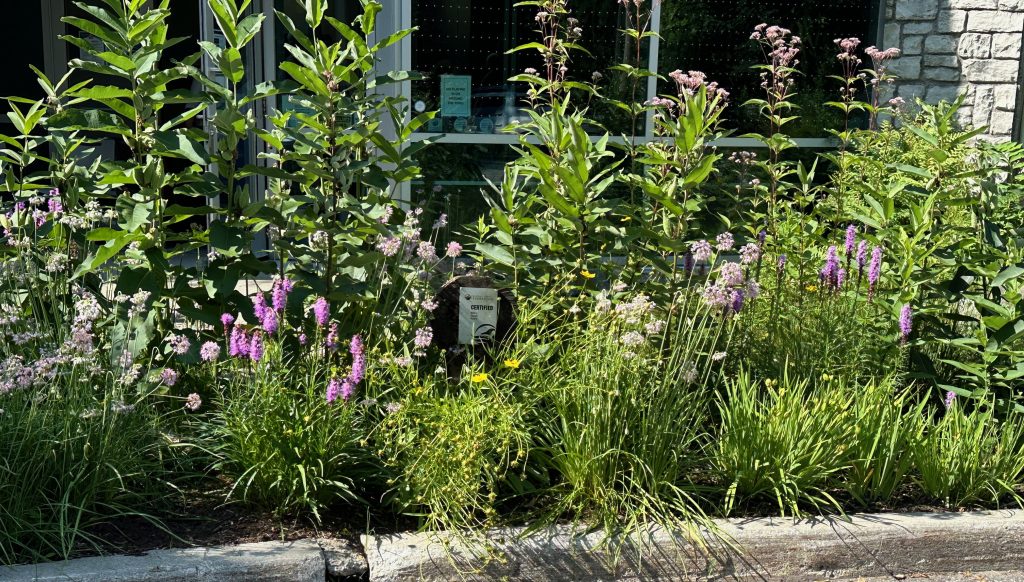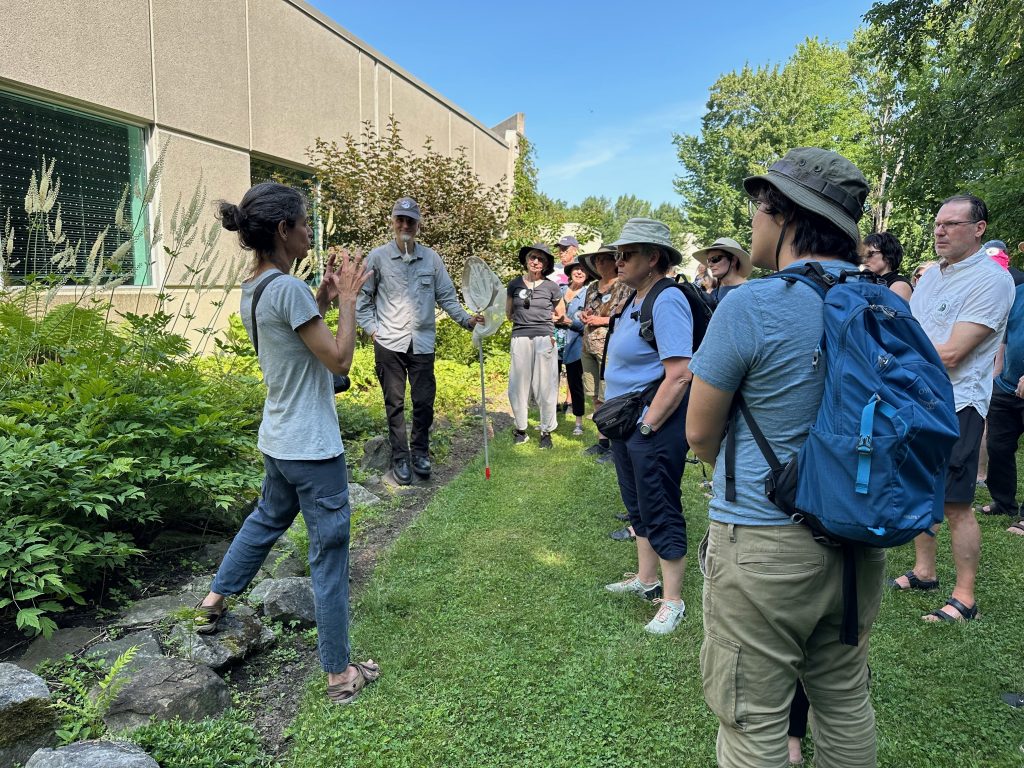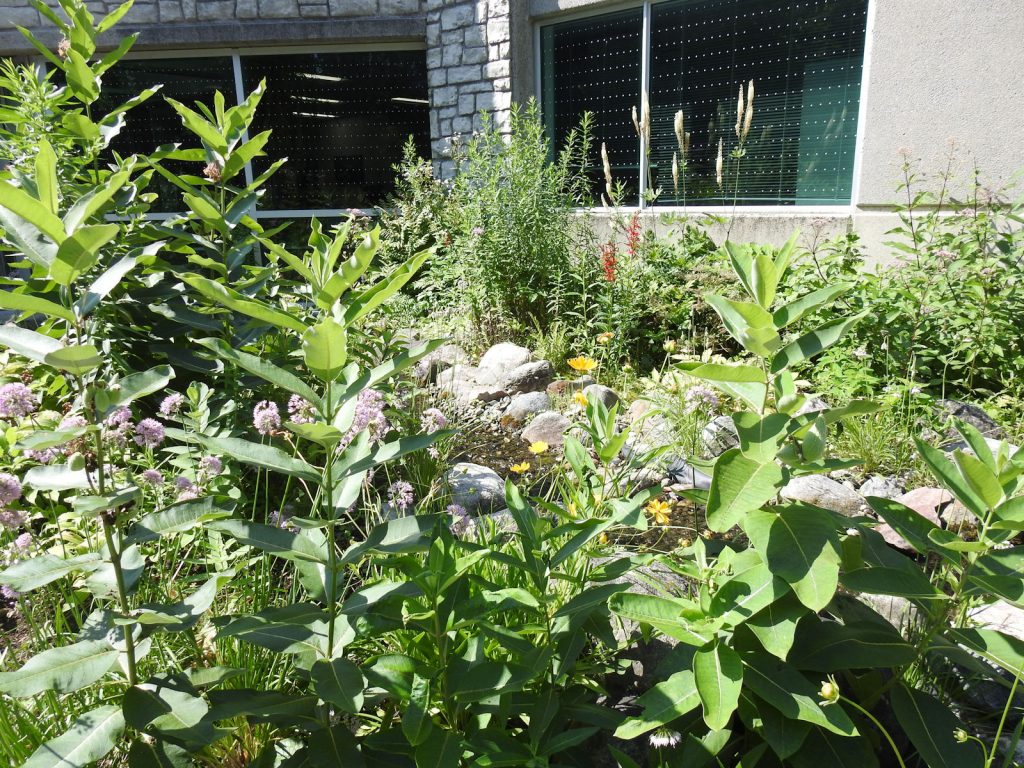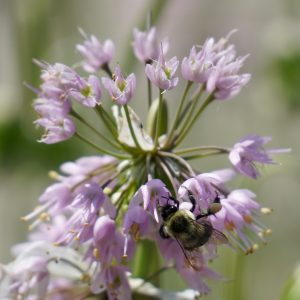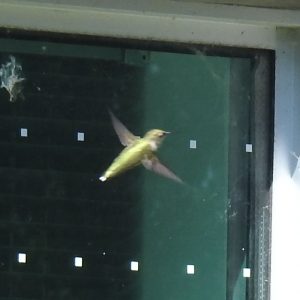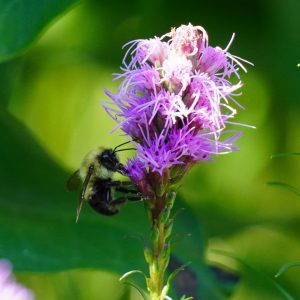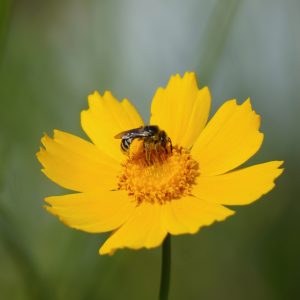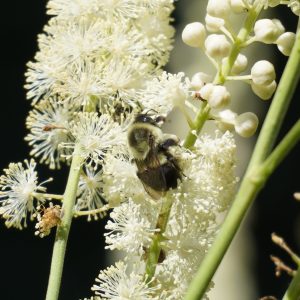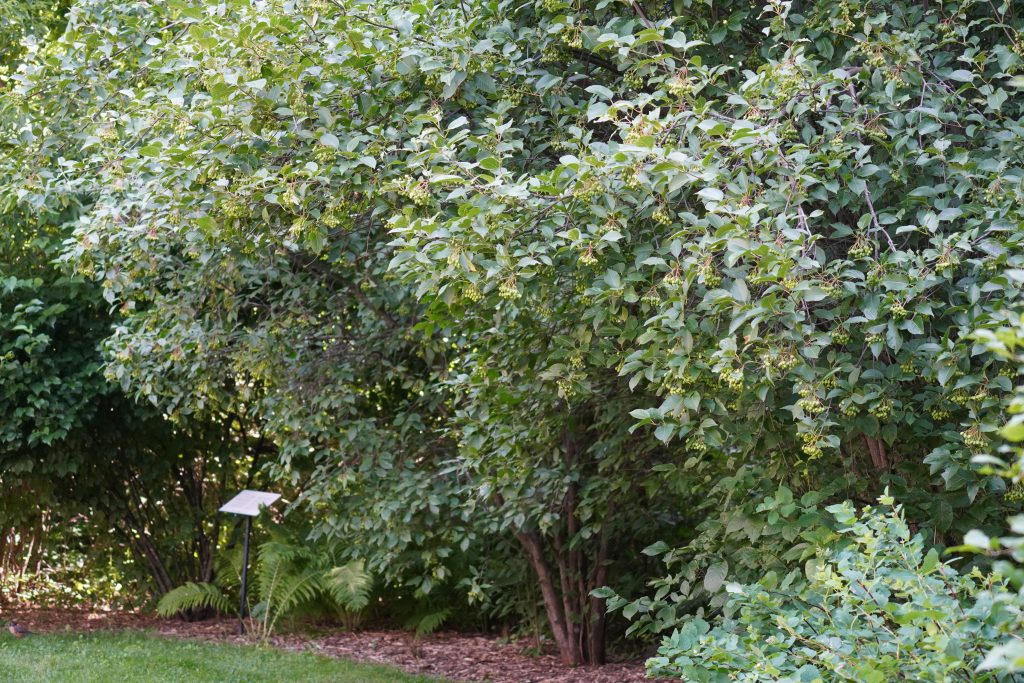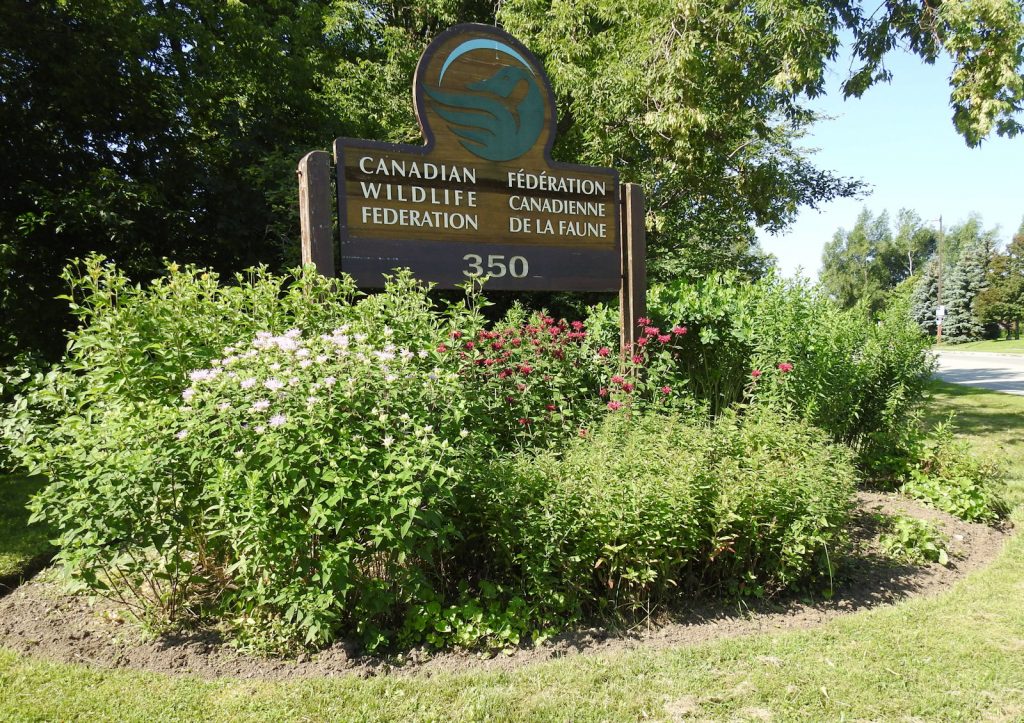by Bert Erickson
On July 20th, we visited the habitat demonstration gardens that surround the Canadian Wildlife Federation’s Kanata office. Created in 2001, they are beautiful examples of mature native plantings in a variety of conditions from sun to shade, and dry to wet soil. The curving edges of the garden beds are lined with stones that separate them from the lawn pathways. Each habitat area has a descriptive sign.
Our host, Sarah Coulber, allowed us use of the building where she had set out many free CWF posters and brochures related to wildlife gardening. Sarah is an education specialist in charge of the CWF’s Wild About Gardening program. She writes about the benefits and how-tos of wildlife-friendly gardening, coordinates content for the web site, and co-manages the wildlife-friendly demonstration gardens.
Entomologist Gil Miranda also joined us to identify insects in the garden. Gil is a researcher in the Forrest Lab at Ottawa U. His post-doc project involves monitoring pollinators in Ontario on rights-of-way lands to test whether various roadside maintenance practices promote healthy pollinator populations.
Sarah first covered some habitat gardening basics. Wildlife – be it pollinators, birds, mammals, or reptiles – need food, water, shelter, and a safe place to raise their young. To create habitat, we should focus on adding regionally native plants to our yards. Native plants and wildlife have co-evolved and have specialized relationships, so wildlife need native plant habitats to survive. As well, we should not use pesticides, buy overly cultivated varieties of native plants, or include invasive species in our gardens.
Our tour began in the front Pond Bed, featuring a long stream that winds its way behind the adjacent sunny border. The pond includes native Pickerel Weed and Cardinal Flowers that attracted a tiny hummingbird at the beginning of our tour. Feather Friendly window dots ensured that the curious bird didn’t collide with nearby windows.
The sunny border was in full bloom with repeated drifts of Dense Blazing Stars, Nodding Onions, Wild Bergamot, Lance-leaf Coreopsis, Purple Coneflower, and Mountain Mint. These plants were alive with bumblebees and other smaller pollinators.
We then moved along to the Shade Bed. While it is mostly planted with spring-blooming woodland flowers, like Mayapple, Wild Ginger, and Jack-in-thePulpit, the Black Cohosh and Purple-flowering Raspberry were still in bloom attracting many insects.
Gil Miranda talked about the variety of pollinators we might see in the CWF gardens. For example, he explained that while flower flies are lesser-known pollinators, they’re great to have around because their larvae eat aphids, white flies, and other common pest insects. Plant their favourite white, open flowers and you’re sure to attract them to your garden too.
Throughout the tour, Gil used his bug net to collect pollinators. He put them into tubes so we could get a better look before he released them again.
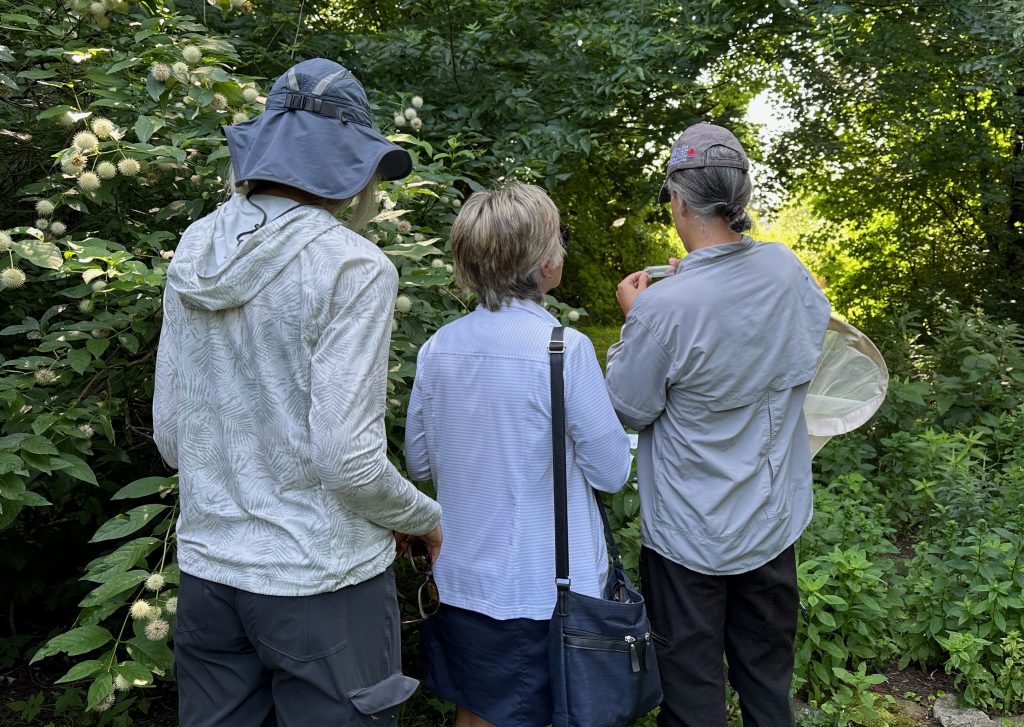
Entomologist Gil Miranda (right) identified bees for participants and allowed a close up look at some of them.
Across from the Shade Bed stands the Shrub Bed, the only example of a mature native hedgerow I have ever seen. Shrubs included: Redbud, Nannyberry, Snowberry, Fragrant Sumac, Beaked Hazel, and Red Osier Dogwood among others. These native shrubs provide berries and nuts for birds – including the Gray Catbird and American Robin family that visited while we were there. Sarah explained that native shrubs are better for birds because the fats and sugars in their fruit are more nutritious than those of non-native species.
Behind that hedgerow, and all along the edge of the parking lot is a narrow wooded area. Surrounding development and changes in waterflow have caused some of the trees to die. They were trimmed and left as snags (standing dead wood) for birds that need them for nesting and roosting. A Brown Thrasher and a Northern Flicker visited the forest on cue.
The tour continued to the Bog Bed, which includes a large Buttonbush, Water Avens, Culver’s Root, and Joe Pye Weed. Then we moved past the Hummingbird Bed with Wild Bergamot, Obedient Plant and Buttefly Weed in bloom. Across from these beds sits an adjoining lot that the CWF purchased to prevent development of the site. It now provides more natural space for employees and wildlife.
The Pollinator Bed had undergone a recent renovation to control some of the more aggressive native plants. Mountain Mint, Rattlesnake Master, along with various Rudbeckia and Sunflowers, offer nectar and pollen for pollinators. Golden Alexanders and Pearly Everlasting are host plants for butterflies.
Lastly, we visited the Bird Bed, which provides more berries with Dogwoods and Serviceberries. Goldenrod, Purple Coneflowers, New England Asters, and False Sunflowers will offer seeds for birds later in the season.
The CWF demonstration gardens are as beautiful as they are useful for wildlife. So many diverse plantings in one property create a variety of habitats for many creatures. If you’re in the neighbourhood, the gardens are well worth a visit. They are open to the public so you can tour them on your own.
